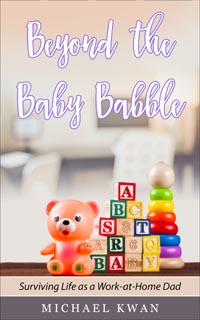
I’ve said it before and I’ll say it again. One of the biggest reasons why Vancouver is such a great city is the food. Not only can you find just about every kind of ethnic cuisine imaginable; you can usually find some really authentic and really good restaurants too.
Interestingly enough, many of the city’s most popular Japanese ramen restaurants are within walking distance of one another. If you want a good bowl of Japanese noodles, you’ll want to head downtown to the corner of Robson and Denman. For yesterday’s lunch, I went to try Benkei Ramen at 1741 Robson Street. I later learned that they have three other locations around the city.
As you may recall, I tried Motomachi Shokudo late last year and I’ve also tried Kintaro Ramen House on more than one occasion. From the outside looking in, you’d assume that the three restaurants would be cannibalizing eachother’s sales, but they’re actually somewhat different from one another.
Just as there is more than one way to make Italian pasta, there are many ways to make Japanese ramen. Kintaro is the most traditional of the three, offering a fattier pork-based broth. Motomachi is more health-conscious with chicken stock and alternative soup options. And Benkei seems to fall somewhere in between, using a pork and chicken base for its soup.

Shown above is the Shio ramen that I ordered. It’s a clearer soup that has been seasoned with sea salt. It costs $6.95 and I added an egg for an extra 50 cents. Compared to Kintaro, Benkei seems to offer less noodle and less “cha siu” (BBQ pork). You can ask for extra noodle and extra pork, but that’ll cost you $1 and $2 more, respectively. I also found the soup to be more bland than Kintaro.

And this second bowl is the Shoyu ramen that Susanne ordered. It has been seasoned with soya sauce, but I didn’t find it to be overly salty. Just like the Shio, this bowl also seemed to have less food in it compared to Motomachi and Kintaro.
The noodles were still just the right consistency (a little chewy, which is what I want) and the pork was tasty, but it’s lacking in the “extras” department. If you want things like corn, nori (seaweed), bamboo shoots, and the like, they typically cost an extra 50 cents each. Benkei wasn’t bad, per se, but I still prefer Kintaro.
Then again, the best bowl of ramen I’ve ever had was at a truck stop just outside of Tokyo. Go figure.
(Side note: Excuse the picture quality. I didn’t bring my camera, so I had to use my cell phone.)





It looks quite good, but a little skimpy as you said. I love anything oriental, since I have a Chinese Sensei that owns a food import business. He takes us to all the authentic restaurants, so there are no fortune cookies where we go. 🙂
@Ray Ebersole, ramen is meant to be simple and might appear as skimpy as its the broth and noodles that make the ramen not the amount of toppings. Even the ramen in Japan is pretty much ‘skimpy’ but its really good. Oh and also, oriental is referred to rugs, not food, or people.
So, who made you the food and word police? I live and associate with many people of Asian descent and more than one that were born in China, Japan, or Laos and they refer to food from the Asian region as Oriental. SO, please don’t tell me how to use my words.